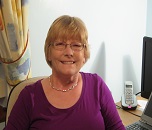
Diane G. Newell
Foodborne Zoonoses Consultancy, UK
Title: The influence of virulence factors on dose response of food-borne pathogens
Biography
Biography: Diane G. Newell
Abstract
Mathematical models are essential to the development of microbiological risk assessments for food-borne pathogens. Such models are highly dependent on assumptions incorporated and in particular, on the human dose response data used. However, such information is often sparse, inaccurate or even absent. Consequently many dose response curves have been estimated from epidemiological studies or in vivo and in vitro models. Multiple interconnecting factors are important in determining infectious dose, including host status, microbial properties and environmental conditions. Most recently the importance of the host microbiome has also been recognized. One major assumption in dose response curves is that all strains of the same pathogen species are equally virulent. However, strains of food-borne pathogens, such as Salmonella, Campylobacter and Escherichia coli, can vary significantly in a range of properties, which might affect the minimum dose required to generate disease. For example, bacterial mechanisms that facilitate pathogen survival of as they transit from farm-to-fork will influence the number of viable organisms ingested by the host, while bacterial capacity to adapt to environmental changes may influence host colonization potential. In addition, not all strains have the genes for, or express, the classical virulence factors that induce disease, such as toxins. This final observation is particularly important given the trend towards the detection of bacterial virulence-associated genes in foods rather than strain isolation. Thus we propose that microbiological risk assessments should incorporate more realistic dose response data for food-borne pathogens, based on known knowledge of strain variation in environmental survival, colonization and clinical outcome.

